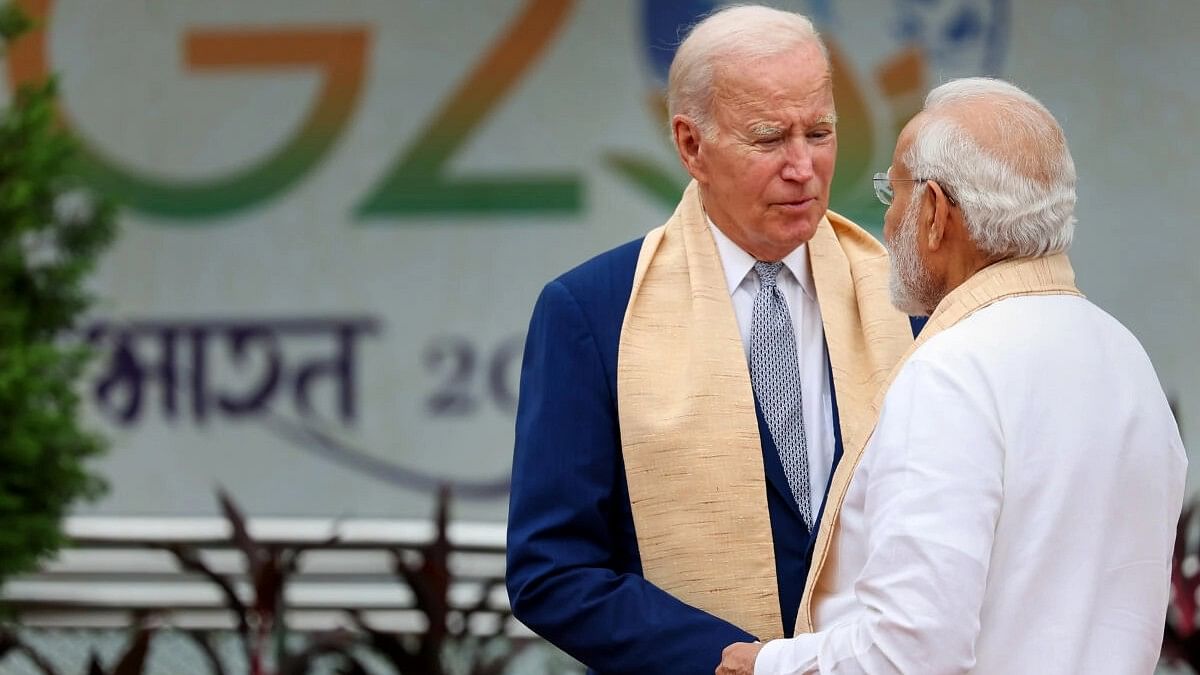
The IMEC deal was agreed upon by India and the US among other countries. Seen here are US President Joe Biden and Indian PM Narendra Modi at the G20 meet where the MoU was signed.
Credit: PTI Photo
One of the significant achievements of the recently concluded G-20 leaders’ summit convened in New Delhi was the announcement of the India Middle East Europe Economic Corridor (IMEC).
This corridor is the biggest multilateral project envisaged to stimulate economic development and economic integration between India, Europe, and West Asia. The Memorandum of Understanding (MoU) has been signed between India, Saudi Arabia, France, Germany, Italy, the US, the EU and the UAE.
This agreement can help the participating countries unlock their region’s economic potential. Prime Minister Narendra Modi said, “It will be a major medium of economic integration between India, Europe, and West Asia.” US President Joe Biden called it a “big deal and a game-changing investment in the region.”
The project will be developed under the Partnership for Global Infrastructure and Investment (PGII) led by G7 countries, which was launched as a joint initiative last year to help developing countries secure funds for infrastructure projects through public and private investment.
The idea behind this corridor is to connect India to Europe through the Middle East. The IMEC will consist of two separate corridors: the Eastern Corridor, connecting India to the Middle East, and the Northern Corridor, connecting the Middle East to Europe.
This is not only a transport corridor but also a connectivity corridor. It will include a railway link, a shipping link, an electricity cable, a high-speed cable, and a hydrogen pipeline.
The railway link can connect shipping passages to India and Europe and boost trade opportunities, including energy products such as green hydrogen.
Completing the railway line under this pact will provide a reliable and cost-effective cross-border transit network to supplement the existing multi-model transport routes while enhancing the transshipment of goods and services between Southeast Asia and the Middle East.
This project would confer various strategic and economic advantages in terms of reduced transit time between India, the Middle East, and Europe, and most importantly, it would help India bypass the troubled trade routes of Pakistan and Afghanistan and revive the age-old spice route. At present, the only route through which goods are transported to Europe is the Suez Canal.
It takes 18 days for the goods to reach Europe from Mumbai port through the Suez Canal. The proposed corridor will reduce the transit time to 10 days and result in a 40 per cent reduction in the transit time.
Since the EU is India’s second-largest trading partner, this agreement can boost India’s trade with the EU. Apart from this, India would also benefit from improved accessibility, a more secured supply chain, and food security.
The development of railway infrastructure would increase the employment opportunities of the manufacturing sector in India. The hydrogen pine line would enhance trade opportunities for energy products such as green hydrogen, thereby leading to clean energy trade.
The high-speed cable would allow the partners to access secure and stable internet and improve digital communications. This corridor can lead to multilateral funding in diverse sectors such as technology, energy, telecom, and high-speed networks.
Experts believe that there needs to be more time to comment on this project. However, this corridor can undoubtedly transform the countries by unlocking the potential of their economic regions. The announcement of IMEC can help India establish its position as a leader in the global supply chain in Asia. Nevertheless, much depends on how this agreement will be executed and implemented.
The participating countries have to sort out the issues related to financing, taxation, customs procedures, and regulation.
There needs to be clarity regarding the financial commitment of the participating countries, and the transnational network requires a high level of planning and coordination. Finally, the success of this corridor would depend on effective tackling of the geopolitical challenges.
(The writer is an associate professor of economics at Christ (Deemed to be
University), Bengaluru)